No. 2 A Self-Contained Distributed Sensing System of Swarm Robotics
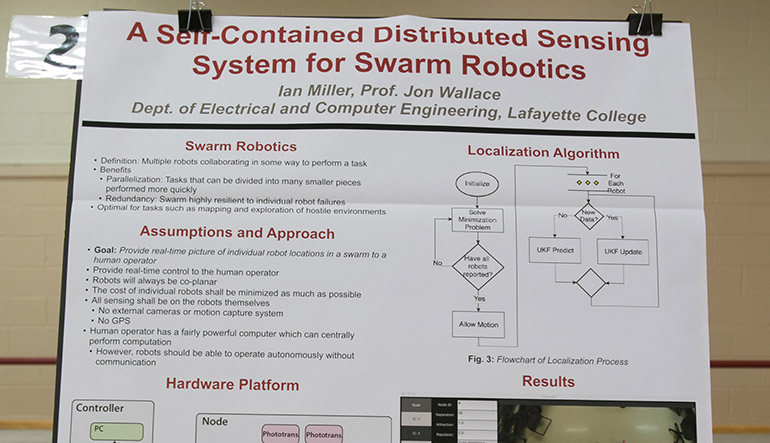 Autonomous swarms of robots are capable of exploring dangerous terrain, stocking shelves in warehouses, or searching for survivors in burning buildings.
Autonomous swarms of robots are capable of exploring dangerous terrain, stocking shelves in warehouses, or searching for survivors in burning buildings.
But keeping track of their location can be tricky, especially if they’re sent into a hostile environment where external cameras or motion-capture systems are not available.
“When you have a lot of robots that are working together, as opposed to one single robot, imagine an application like mapping,” says Ian Miller ’18, an electrical and computer engineering major. “You can map an area faster with multiple robots working together. If one robot fails for some reason the swarm can continue and accomplish the task.”
Miller’s research with Jon Wallace, associate professor of electrical and computer engineering, has involved development of an algorithm to determine the location of the swarming robots in real time while still allowing them to perform their tasks autonomously.
“If you’re operating a swarm of robots, you need to know where they are located, and that’s hard to do without using cameras that you don’t have when you’re going into a disaster zone instead of a lab environment,” Miller says. “In this project, each robot has onboard sensors that can determine their location.”
No. 4 Glue Made of Plants: Harnessing Nature to Make a Better Polymer Adhesive
 It’s been a sticky challenge for Clark Addis ’20 to come up with a safer, more sustainable wood glue, but he looked to plants for a possible solution.
It’s been a sticky challenge for Clark Addis ’20 to come up with a safer, more sustainable wood glue, but he looked to plants for a possible solution.
Particleboard, fiberboard, and plywood have traditionally been made with petroleum-based adhesives that pose health risks. When the wood eventually decays, the toxic synthetic glue lingers.
“The problem with current wood composites is that the wood is biodegradable, but the glue in them are not,” says Addis (mechanical engineering and art). “So we’re trying to make a bio-based glue that could be biodegradable, so when the wood is thrown away the glue can decompose too.”
The objective for Addis and his advisers, Melissa Gordon, assistant professor of chemical engineering, and Rachel Koh, assistant professor of mechanical engineering, has been to create a bio-based wood adhesive to reduce health risks and reliance on petroleum.
“One problem with current bio-based adhesives is that they have poor moisture resistance and can’t withstand exposure to the weather,” he notes.
Polyurethanes show promise—they can be made using sugars, or even algae, are non-carcinogenic, fast-curing, and water-resistant, but they can trigger an allergic reaction when manufactured.
Another potential solution is to turn to linseed oil, which is 100 percent bio-based and fully sustainable from start to finish. As an ingredient in glue, it forms a strong covalent bond and is non-carcinogenic.
“Hopefully this research will one day lead to wood-based construction and building materials that support a more sustainable future,” Addis says.
No. 6 Characteristics of RSPO-Certified Farms in Germany and France
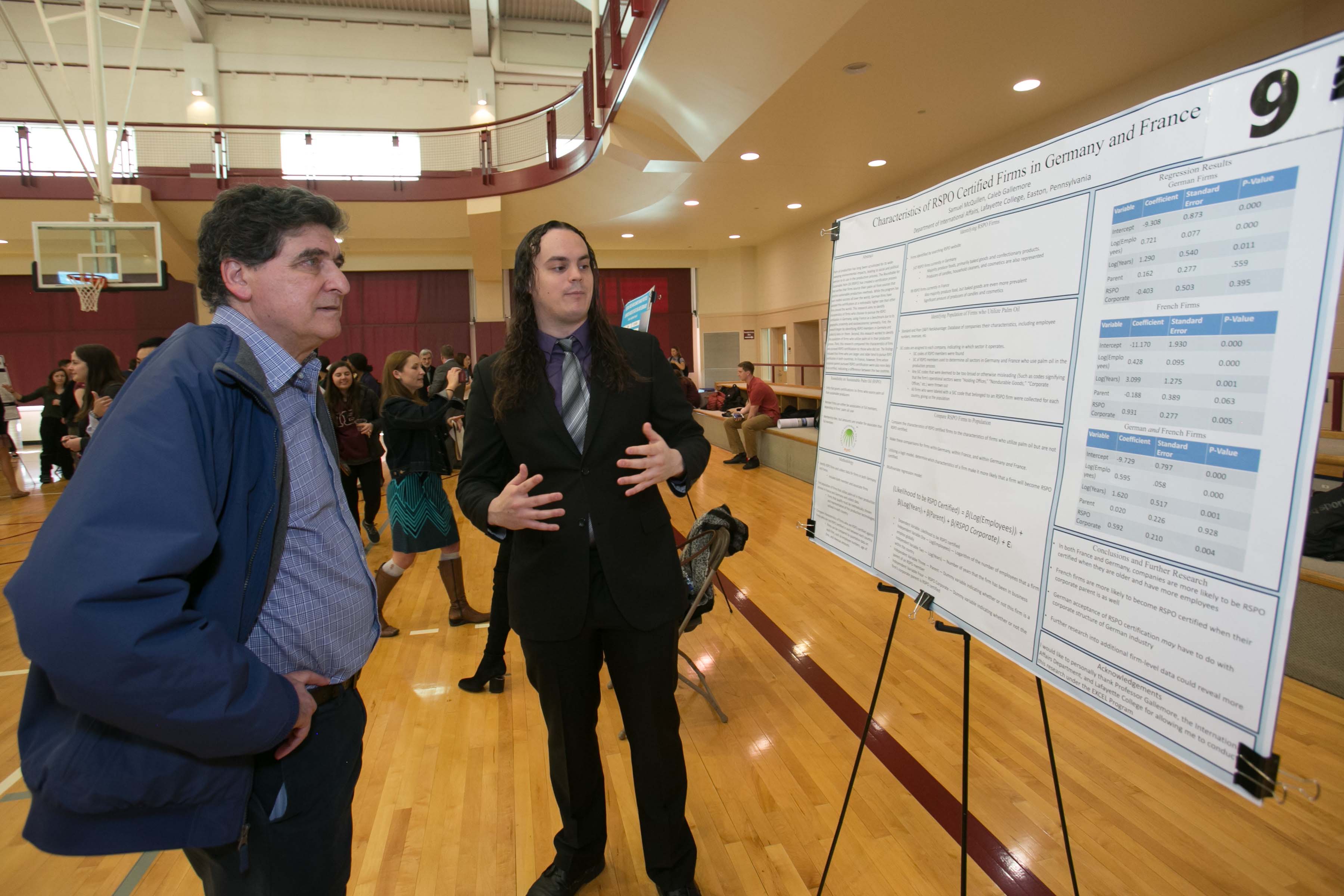 Are you more likely to purchase a product from a company that operates in an environmentally responsible way? Samuel McQuillen ’19 is. And he believes that because other concerned consumers feel the same, it’s to a company’s advantage to market itself as adherent to environmental regulations and practices. That is why he decided to research the factors that influence a company’s decision to become RSPO-certified, which means that it harvests palm oil and produce palm-oil products in a sustainable way that reduces environmental impact.
Are you more likely to purchase a product from a company that operates in an environmentally responsible way? Samuel McQuillen ’19 is. And he believes that because other concerned consumers feel the same, it’s to a company’s advantage to market itself as adherent to environmental regulations and practices. That is why he decided to research the factors that influence a company’s decision to become RSPO-certified, which means that it harvests palm oil and produce palm-oil products in a sustainable way that reduces environmental impact.
Use of palm oil, an ingredient found in food products, cosmetics, and detergents, is a growing concern among environmentalists. Palm-oil plantations are concentrated in Malaysia and Indonesia, where deforestation has caused loss of habitat for threatened and endangered species. Deforestation also may contribute to climate change and air, water, and soil pollution. In short: It’s a problem. And being part of a perceived solution could work to a company’s advantage.
“Not only is it good for a company’s advertising and marketing—to be able to say it is RSPO certified, but it’s also just a good moral and ethical thing to do,” says McQuillen, who is an international affairs and economics double major. McQuillen’s research revealed that a company’s size played a role in whether it got the certification: Companies with greater numbers of employees were more likely to get the certification, which might indicate that there is a cost barrier. “A firm that is larger presumably has more money, and able to afford the fee associated with the certification.” Another factor could be how the company positions itself in the marketplace. “A larger company might see the advertising and marketing benefits more so than a smaller mom-and-pop business, which might rely on its long-standing reputation and longevity in an industry, rather than promoting sustainability.”
No. 7 Ideational Forces and Climate Change Politics: A Comparative Analysis of East Asia and Germany
 Climate change is one of the most relevant, politically charged issues in the world today. Which is what made it such an appealing thesis topic for Sian Barry ’18. Barry, an international affairs major and economics minor, conducted case studies to examine how four different countries—China, Japan, South Korea, and Germany—are stepping up their regional, national, and global environmental policies to fight climate change.
Climate change is one of the most relevant, politically charged issues in the world today. Which is what made it such an appealing thesis topic for Sian Barry ’18. Barry, an international affairs major and economics minor, conducted case studies to examine how four different countries—China, Japan, South Korea, and Germany—are stepping up their regional, national, and global environmental policies to fight climate change.
Under the guidance of her adviser, Professor Il Hyun Cho, she also investigated how perceptions about the environment, role conceptions, and political framings influence countries to push for greater environmental action. Barry found China to be a particularly interesting case study, since the nation went from playing a minimal role in the 2009 United Nations Climate Change Conference in Copenhagen to becoming a global leader in the environmental movement, especially in the 2015 Paris Summit. “In China, as soon as economic growth started being undermined by environmental degradation, President Xi Jinping realized it was necessary to address this issue and to continue to grow in a sustainable way,” Barry says. “He is emphasizing having harmony between man and nature as he promotes climate change policies.”
Barry knows this research experience will be valuable, regardless of her career path. “I am grateful to have had the opportunity to learn about this important issue—140 pages later, it’s something I’m really passionate about,” she says. “I feel it’s important for me to have an understanding of the policies and the roles that countries play. It can help me be a better, more informed advocate for environmental action.”
No. 17 How do you build a faction? Campaign support for ideological caucuses in the U.S House of Representatives
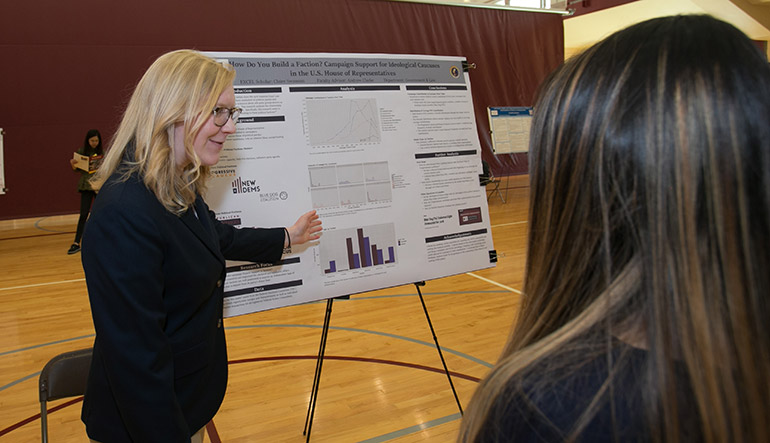 Who holds the purse strings of the U.S. Congress? Big business, some people say. Special interest groups, say others.
Who holds the purse strings of the U.S. Congress? Big business, some people say. Special interest groups, say others.
Claire Swanson ’19 crunched the numbers from publicly available campaign finance data for political action committees and discovered that who donates to a faction—ideological subgroups within the House—hinges on where it falls along a political spectrum.
Caucuses that espouse the views of the far right or the far left tend to draw donations from individuals, Swanson says. Corporations or larger groups tend to donate to more centrist political factions.
“So basically the working hypothesis is that when you have a more ideologically pure type of group—Progressive Caucus (very liberal), Freedom Caucus (very conservative)—they’re going to attract more individuals, because individuals who are going to donate to these groups, they have more potentially extreme political views,” Swanson says. “Whereas organizations tend to donate for practical reasons. They’re going to contribute to more centrist types of ideology because those factions advertise their ability to work with others and may pass more legislation that is favorable to these organizations’ interests.”
It’s a more nuanced perspective than the classic “Who donates to which political party?” perspective.
“With more data we would like to see if donor ideology is distinct from the donors who are contributing to whole parties,” Swanson says. “Whether or not the average ideology of the Progressive Caucus donor base is more liberal than the donor base to the Democratic party.”
No. 21 Get a Grip on Math: Interaction of Mathematical Skills and Number Magnitude on Grasping Behavior in Children
 Think you don’t have a head for math? Think again. All of us are born with number sense, a limited amount of mathematical ability. It manifests itself in a number of ways long before we crack open a math textbook.
Think you don’t have a head for math? Think again. All of us are born with number sense, a limited amount of mathematical ability. It manifests itself in a number of ways long before we crack open a math textbook.
Marissa Laws ’18, Morena Koorie ’20, and Associate Professor of Psychology and Neuroscience Luis Schettino set out to learn if the intersection of mathematical cognition and motor skills like grasping blocks has anything to say about mathematical ability. Much of our pre-learned mathematical abilities develop and manifest below our level of awareness—the span between our thumb and forefinger, for example, adjusts itself based on the size of an object we’re trying to grasp, but this can be influenced by the magnitude of a number printed on the object.
“And so mathematical cognition and motor cognition overlap,” Laws says. “In our study, what we looked at was how they interfere with each other or complement each other, depending on how you look at it.”
What better test subjects than the children of Lafayette professors? The research team picked 10 second- and third-graders who are the offspring of members of the Lafayette faculty along with 13 adults.
Each test subject was presented with numbered glow-in-the-dark blocks. Larger numbers were expected to cause larger grasps than smaller numbers, even on the same-sized block, as has been shown by earlier research. Then, the team administered a math test.
They discovered that, like adults, the children’s grasping behavior reacted to the numbers on the blocks. Further testing could show how this relates to math aptitude—and how it could be used to teach young students with math disabilities.
No. 29 Delaware River Island Dynamics Determined from GIS and Historical Aerial Imagery
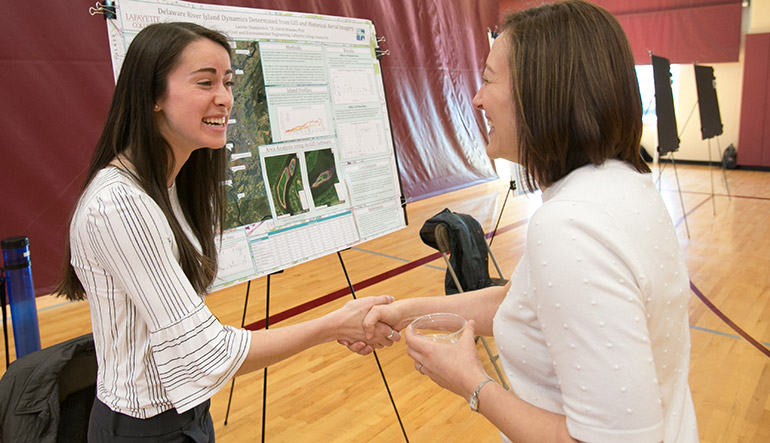 Spectators might be tempted to think Lafayette’s natural surroundings slumbering in the confluence of the Delaware and Lehigh rivers haven’t changed much in 200 years.
Spectators might be tempted to think Lafayette’s natural surroundings slumbering in the confluence of the Delaware and Lehigh rivers haven’t changed much in 200 years.
They’d be wrong. The land in and around College Hill is constantly evolving. Lauren Onatzevitch ’18 has the proof.
Working with David Brandes, professor of civil and environmental engineering and co-chair, environmental science and environmental studies, she examined islands in the Delaware River near Easton. Using geographic information systems (GIS) software, Onatzevitch compared aerial photos of islands from 1958 to 2010.
“We found the general trend is that some of the smaller islands in this area are changing at a greater rate than the larger, more established islands,” she says. “That may be partially the result of flooding events that are pretty common in the city of Easton.”
The GIS software was used to draw polygon shapes around existing islands to quantify and show how the land has changed.
The change isn’t necessarily a bad thing, Onatzevitch says.
“It’s good to quantify these changes because it can be a tool,” she says. “Possibly for use in areas like floodplain risk mitigation.”
No. 30 Life Event, Hassle, and Organizational Stressors as Related to Manifestations of Stress in Undergraduates
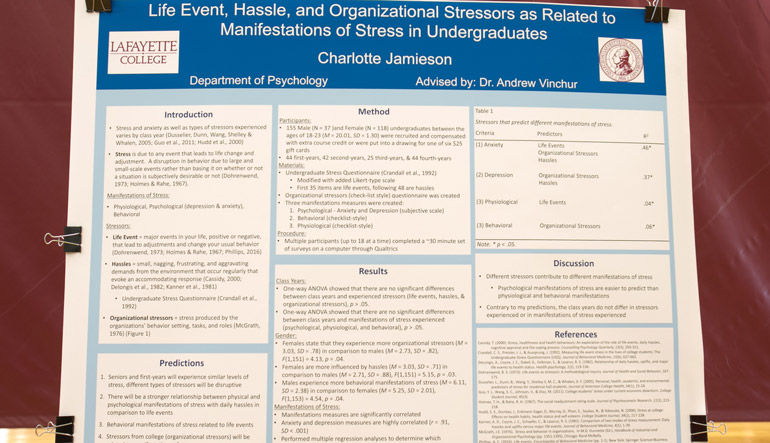 College students are stressed out. Big news flash, right?
College students are stressed out. Big news flash, right?
But Charlotte Jamieson ’18 sought to find out how stress differs among the various class years on College Hill. What are big causes of stress at Lafayette, and how do students show it?
Jamieson, a psychology major, administered surveys to 155 students on College Hill. She discovered that each year is equally on edge at Lafayette—first-year to senior, every class year is roughly as wigged out as the next.
What Jamieson did discover was that stress and how it manifests itself differs between the sexes. Women at Lafayette are more likely to feel organizational stress than men. Men, however, have more behavioral manifestations of their stress than women.
“So what I found was that the psychological manifestations of stress can reliably be predicted by life events, hassles, and organizational stressors,” Jamieson says. “And that was my primary like ‘yay,’ really happy finding.”
While Jamieson’s study didn’t find the differences she was looking for, it was a successful look at stress at Lafayette.

 Autonomous swarms of robots are capable of exploring dangerous terrain, stocking shelves in warehouses, or searching for survivors in burning buildings.
Autonomous swarms of robots are capable of exploring dangerous terrain, stocking shelves in warehouses, or searching for survivors in burning buildings. It’s been a sticky challenge for
It’s been a sticky challenge for Are you more likely to purchase a product from a company that operates in an environmentally responsible way?
Are you more likely to purchase a product from a company that operates in an environmentally responsible way?  Climate change is one of the most relevant, politically charged issues in the world today. Which is what made it such an appealing thesis topic for
Climate change is one of the most relevant, politically charged issues in the world today. Which is what made it such an appealing thesis topic for  Who holds the purse strings of the U.S. Congress? Big business, some people say. Special interest groups, say others.
Who holds the purse strings of the U.S. Congress? Big business, some people say. Special interest groups, say others. Think you don’t have a head for math? Think again. All of us are born with number sense, a limited amount of mathematical ability. It manifests itself in a number of ways long before we crack open a math textbook.
Think you don’t have a head for math? Think again. All of us are born with number sense, a limited amount of mathematical ability. It manifests itself in a number of ways long before we crack open a math textbook. Spectators might be tempted to think Lafayette’s natural surroundings slumbering in the confluence of the Delaware and Lehigh rivers haven’t changed much in 200 years.
Spectators might be tempted to think Lafayette’s natural surroundings slumbering in the confluence of the Delaware and Lehigh rivers haven’t changed much in 200 years. College students are stressed out. Big news flash, right?
College students are stressed out. Big news flash, right? If you want a gold-medal example of the impact an athlete can have on a country, look no further than Usain Bolt, whose Olympic victories not only generated great national pride but also put Jamaica on the global stage. Gaining global relevance through athletics is an appealing practice, especially for smaller countries that otherwise may not get the spotlight.
If you want a gold-medal example of the impact an athlete can have on a country, look no further than Usain Bolt, whose Olympic victories not only generated great national pride but also put Jamaica on the global stage. Gaining global relevance through athletics is an appealing practice, especially for smaller countries that otherwise may not get the spotlight.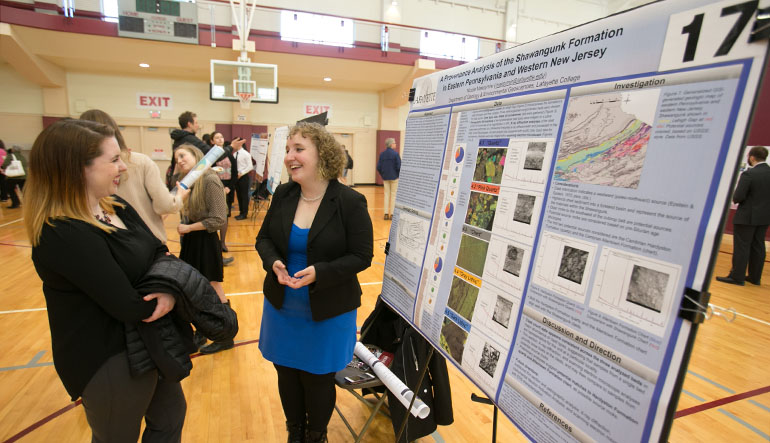 Everyone loves an origin story—especially geologists. In superhero movies, the origin story details how the hero gained his powers and his desire to fight for justice. In geology, it’s the history of rocks and sediments that reveal past geologic processes and environments in which they took place. For her thesis project, geology major
Everyone loves an origin story—especially geologists. In superhero movies, the origin story details how the hero gained his powers and his desire to fight for justice. In geology, it’s the history of rocks and sediments that reveal past geologic processes and environments in which they took place. For her thesis project, geology major 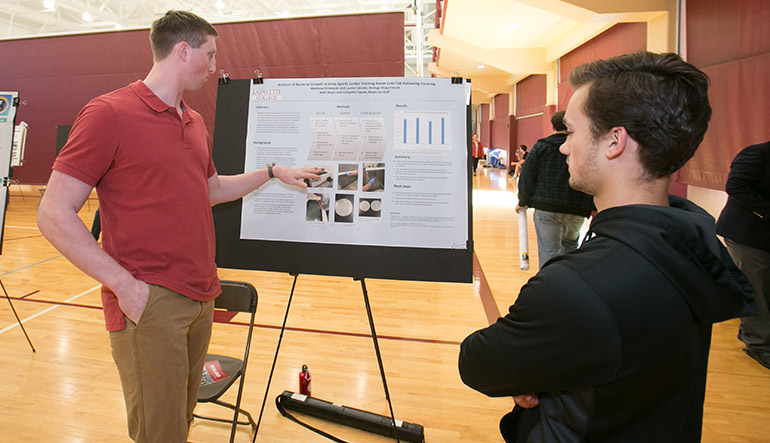 Cold-water tubs are a therapeutic tool that help athletes recover from hard training sessions and games. But if bacteria are lurking in that tub, a post-workout soak could cause more harm than good. This is something that interested
Cold-water tubs are a therapeutic tool that help athletes recover from hard training sessions and games. But if bacteria are lurking in that tub, a post-workout soak could cause more harm than good. This is something that interested 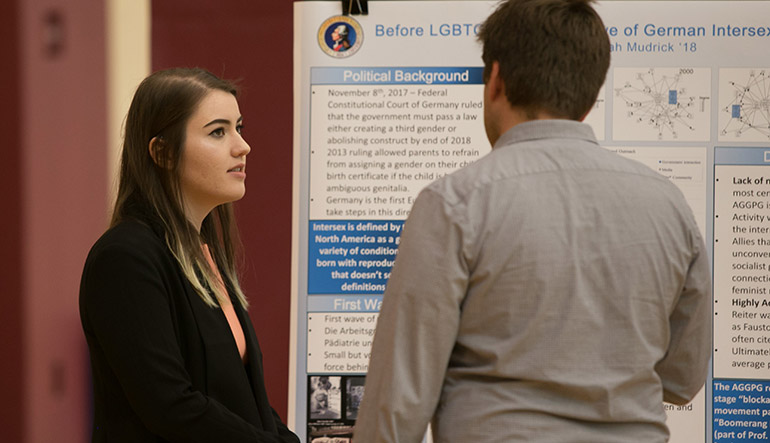 On Nov. 8, 2017, a German federal court ruled that the nation must create a third legal gender or abolish gender classifications from Germany’s legal system and government altogether.
On Nov. 8, 2017, a German federal court ruled that the nation must create a third legal gender or abolish gender classifications from Germany’s legal system and government altogether.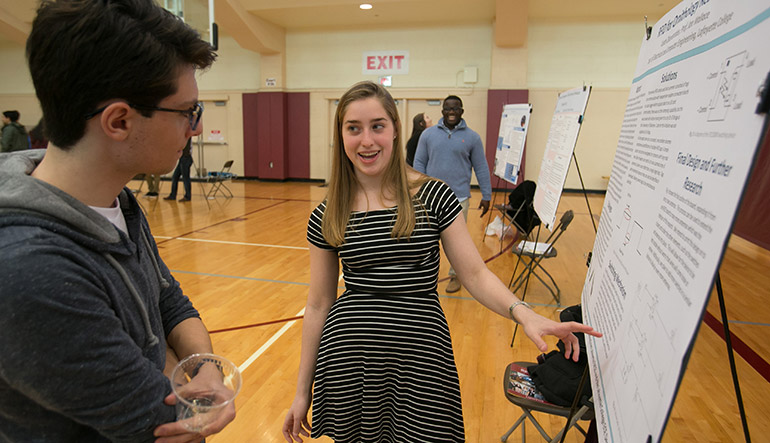 Researchers seeking to track bird migration have traditionally used trapping and releasing to attach an identification band to a bird’s leg so wildlife officials can gather data. The technique is unreliable and, if you’re a bird, not the most pleasant encounter with humans.
Researchers seeking to track bird migration have traditionally used trapping and releasing to attach an identification band to a bird’s leg so wildlife officials can gather data. The technique is unreliable and, if you’re a bird, not the most pleasant encounter with humans. 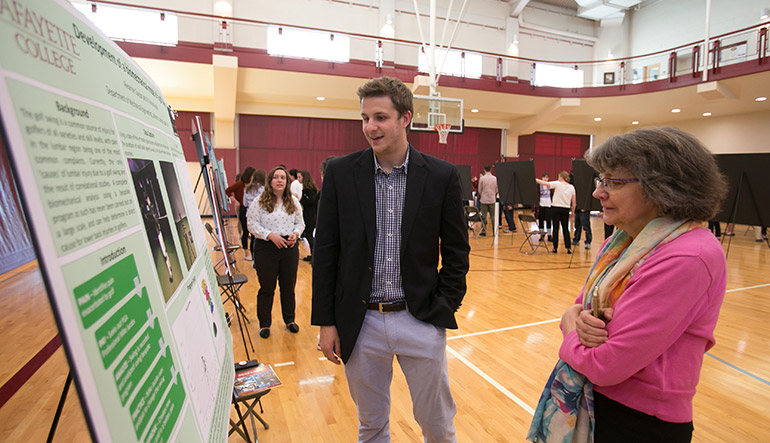 Some of the greatest golfers have been sidelined with lower back pain.
Some of the greatest golfers have been sidelined with lower back pain.